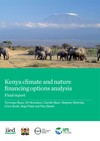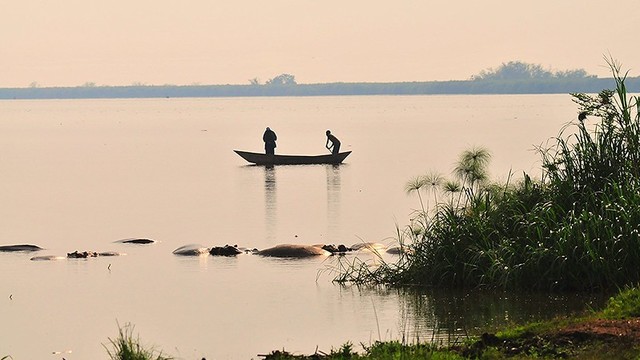Supporting Jordan and Kenya to mobilise finance for climate and nature
IIED co-authored with Bankers without Boundaries and others two reports analysing how Jordan and Kenya could mobilise financing for scaled-up action on climate and nature. The reports contributed to a World Bank initiative and focused on options that are affordable and fiscally stable.

Elephants with Mount Kilimanjaro in the distant background, Kenya (Photo: Curt Carnemark/World Bank, via Flickr, CC BY-NC-ND 2.0)
Many developing countries are facing a growing risk of falling into debt. Late in 2022, the head of the UN Development Programme estimated that some 54 countries are at risk of defaulting on their debts and becoming effectively bankrupt.
This issue pre-dates COVID-19: in the decade from 2011, many low- and middle-income countries rapidly increased their debt burdens. The pandemic forced many governments to borrow further to stabilise their economies. Debt burdens have been further increased due to the Ukraine war, which has dramatically increased fuel and food prices and led to more borrowing.
In addition, many countries face growing economic impacts from climate change and nature damage. At a time when developing countries urgently need to increase their spending on climate and biodiversity resilience, many can't afford additional expenditures. As climate and nature-related losses increase, this will likely result in worsening financial conditions.
International organisations are increasingly concerned that without a coordinated global response that integrates climate and nature concerns, many countries will fail to achieve resilient development or the Sustainable Development Goals, and that the triple crisis of debt, climate change and nature loss poses a systemic risk to the global economy.
To address these issues, the World Bank has funded policy research with governments to identity solutions.
What did IIED do?
IIED and partners led on reports analysing how Jordan and Kenya could mobilise finance for action on climate and nature given their fiscal constraints.
Each report reviews the countries’ options for expanding the sources of finance for climate and nature and suggests steps national governments could take to access more financing.
The ‘Jordan climate and nature financing analysis’ report notes that Jordan is highly vulnerable to climate change and nature degradation. Unless this issue is addressed, this vulnerability will be reflected in substantially reduced economic growth.
There is no existing analysis of current climate and nature financing in Jordan, but the report's authors estimate that Jordan has a climate and nature annual financing gap that equates to 3.4% of the country’s GDP.
The report says conventional sources of finance, such as increased growth and private sector financing, could potentially cover three-quarters of this financing gap over the long term (10 years). However, the report warns that in the short- to medium-term, Jordan’s financial situation is precarious and urgent grant support is needed.
The report recommends that Jordan’s government creates a working group that links existing climate and nature coordination bodies to develop climate and nature financing plans and to explore all financing options, including the potential for accelerating private climate and nature finance. It notes that innovative financial instruments incorporating key performance indicators could accelerate private investment.
The ‘Kenya climate and nature financing options analysis’ report estimates that Kenya's total financing gap is some US$5.13 billion each year. The report includes recommendations for how Kenya’s government could tackle the issue, such as establishing a working group to explore innovative climate and nature finance and aiming to standardise monitoring reporting and verification systems.
It says the Kenya government should also explore the potential for issuing innovative climate and nature-related financial instruments, including nature performance bonds, structured bonds similar to South Africa’s Wildlife Conservation Bond – also known as the ‘Rhino Bond’.
Publications
Additional resources
News: KD 482 mn spending on climate and nature in the 2021 budget (Arabic only) (December 2022)
News: Countries most vulnerable to climate change able to borrow less than 15% of the money needed to adapt before hitting debt distress (October 2022)
Blog: New guide for linking sovereign debt to climate and nature action, by Jean-Paul Adam (November 2021)
Toolkit: Linking sovereign debt to climate and nature outcomes. A guide for debt managers and environmental decision makers, IIED, Potomac Group LLC, UNECA, UNESCWA, UNDP (2022) Arabic | Chinese
Project: Tackling the debt, climate and nature crises together





